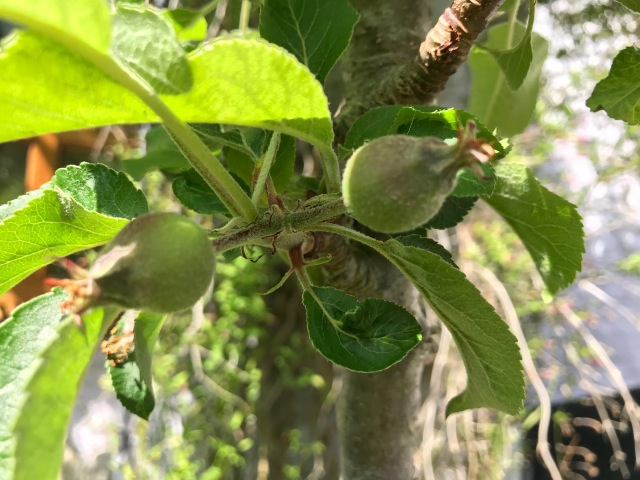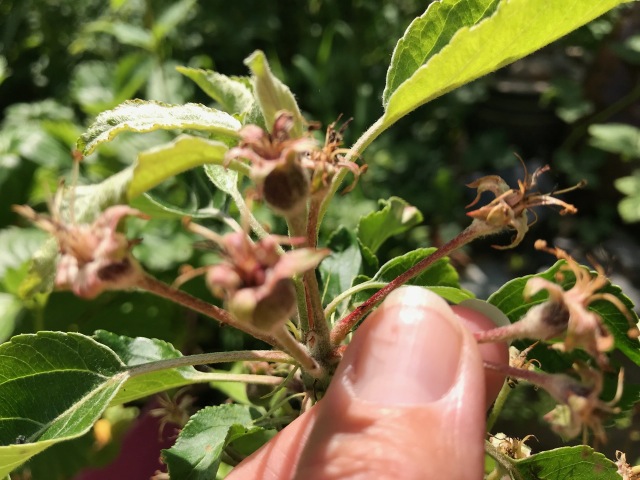
Jean Vernon explains the June Drop phenomenon, what it means and what to do
June can be a strange month in our gardens. While the garden is burgeoning with lush vegetation in the moist warm weather, something very strange is happening on our fruit trees. Particularly the apples.
If you watch your apple trees carefully each spring, as the blossom opens and the bees visit, it can be very exciting to see hundreds of mini apples starting to swell where the flowers have fallen. But don’t count your apples before they have matured. What might seem like a bumper crop now, will quickly thin out with the June Drop and you may just get ten percent of the crop you were expecting. It’s not all doom and gloom though, it’s nature’s way of perfecting the harvest and something we should revere. Sometimes quality is better than quantity, let me explain.
Little apples

By June the clusters of little fruits are starting to swell and take on the shape and form of little apples. But take a closer look and you will see that some of the tiny fruit have fallen and others are hanging on by stems that are yellow/brown in colour. Beside them fatter, healthier fruits are taking shape. It’s nature’s way of ensuring a healthy crop. For every successful apple contains the seeds of the next generation and it’s better for the tree to have a dozen really strong fruits full of good seed than hundreds of poorly formed or less vigorous fruits instead. It’s called the June Drop and it’s nothing to worry about. In fact gardeners are trained to do this for grapes and peaches, where too many fruit will become crushed and misshapen as they swell. The plants all need vast amounts of water, nutrients and vigour to support the fruit that they bear and it is better to have a few perfect fruit than lots of poor quality produce.
Perfect harvest

You can assist your fruit trees now by taking a close and careful look at the fruit that is starting to mature. Look out for any tiny wounds or blemishes, these will grow with the fruit and what is tiny now will become a bigger battle scar when the fruit is full size. Better to carefully remove each damaged one now than let it mature and waste the plant’s energy. A gentle twist and tug will remove any that are going to drop soon, but if you are removing blemished fruit it is better to use a sharp pair of pointed snips so that you can get in between the fruit and not damage the neighbouring ones as you work.
Good year for apples
It looks like it could be a good year for apples, in my garden anyway, but do remember that if we have the promised heat wave any fruiting plants and trees will need plenty of water to swell the crop and without rain our garden plants will be slow to produce nectar for the bees. Put out bowls of fresh water for the wildlife and water your bee friendly plants to keep them replenishing their nectaries.
Remember that without our precious pollinators we wouldn’t have any tree fruit. Their quest for searching out and collecting pollen to feed their young, in turn moves pollen from flower to flower and tree to tree, facilitating this essential role in nature. So whatever you do in your garden, keep your pollinators in mind and avoid any action that may affect their delicate existence.


